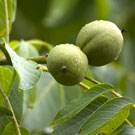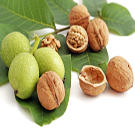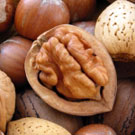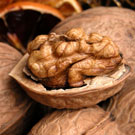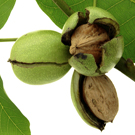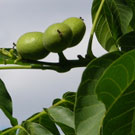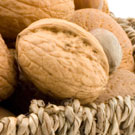Walnut Tree Varieties
Walnut trees are drought resistant but require plenty of sunlight, and protection from wind is recommended. Roughly two thirds of the world's walnut tree production is from right here in the USA and 99% of those walnuts are produced in California. The shells of black walnuts are commonly used to polish soft metals and as a filler for dynamite. Walnut tree timber is one of the nut trees commonly used for gun stocks due to the compression resistance along the grain of the wood.
(Click for more)Tree spacing depends on whether you are growing nut trees for timber or nut production. Trees planted for timber should be planted close together so that the lower limbs die and fall off. Doing this improves the quality of the timber by reducing the number of defects in the lumber. Trees planted for nut production are usually poor timber sources as the wood is full of knots and the sapwood is lighter in color. Trees planted out in the open grow fuller, larger crowns making them much better for nut production than walnut trees planted in or near the forest. Willis Orchard Company offers several walnut trees for sale such as the Black Walnut, Chandler, Cook's Giant Sweet, English, Hartley, Thomas Black, and White Walnut.
(Click for more)